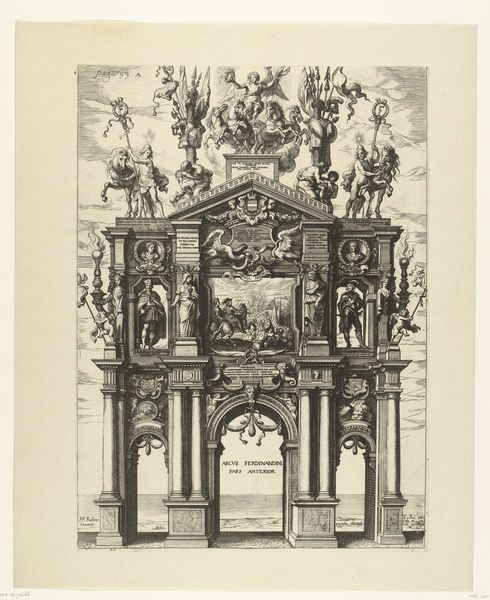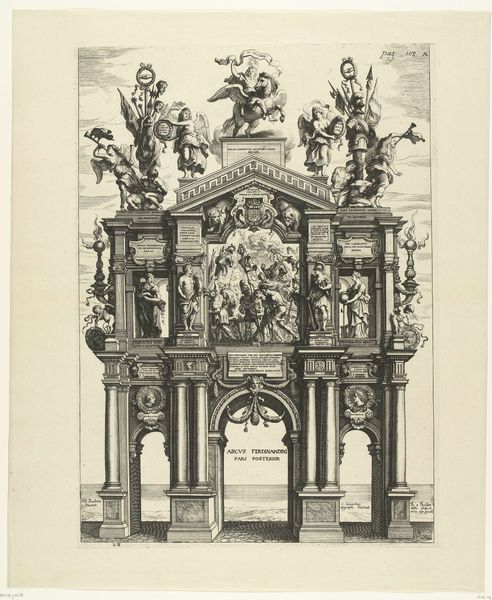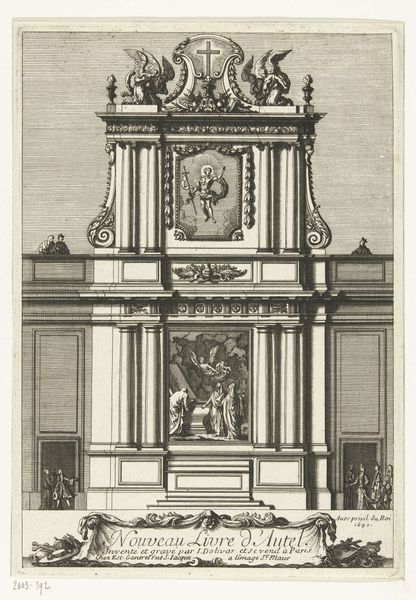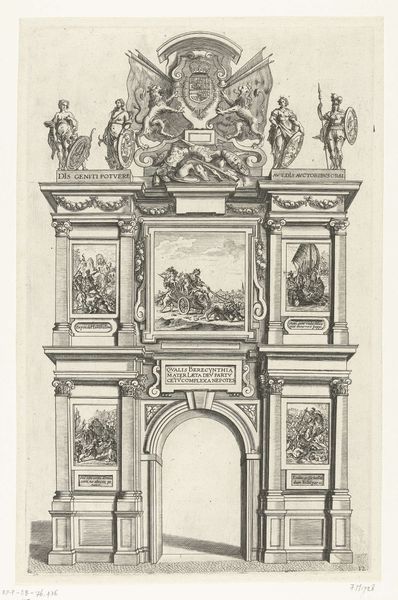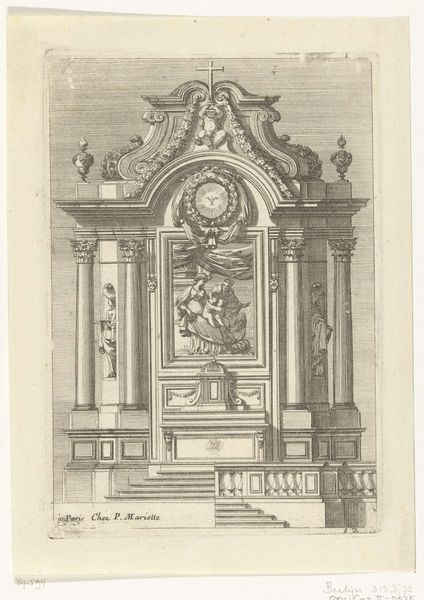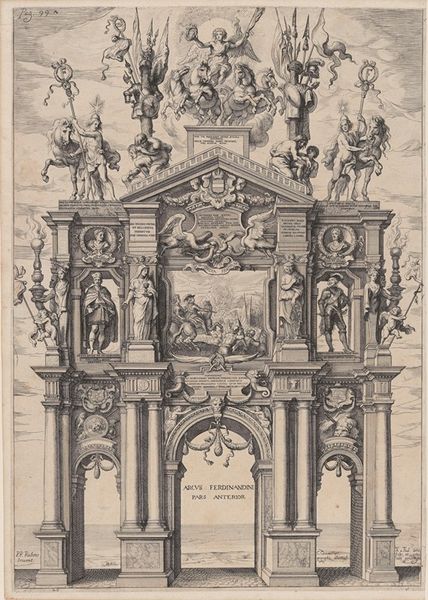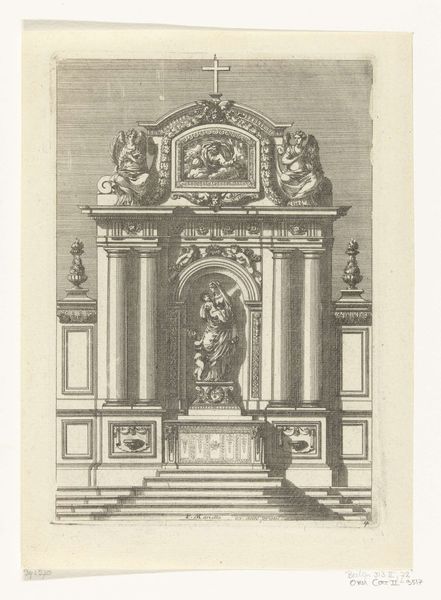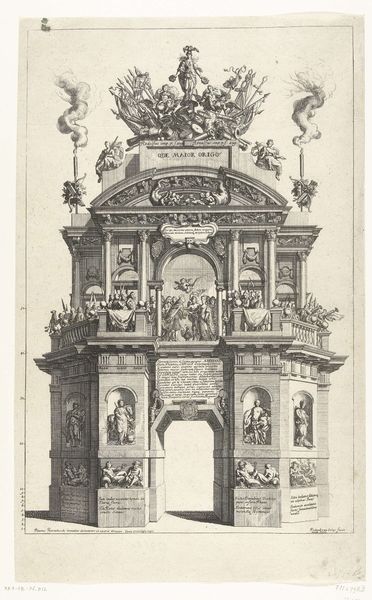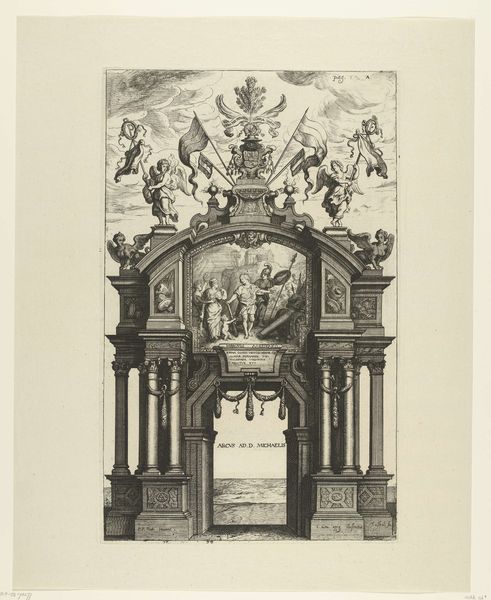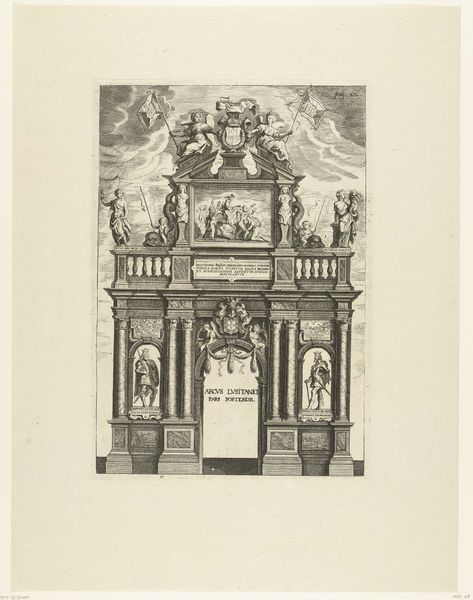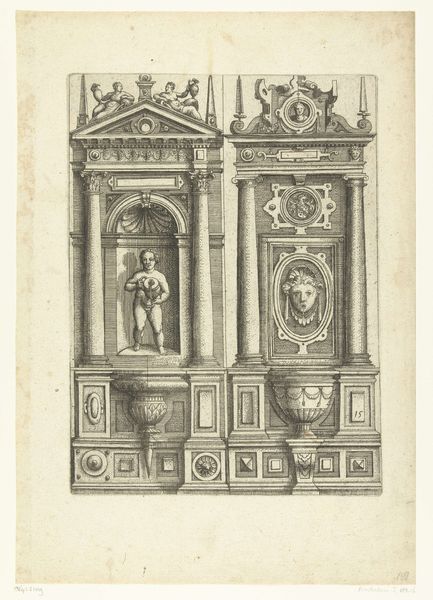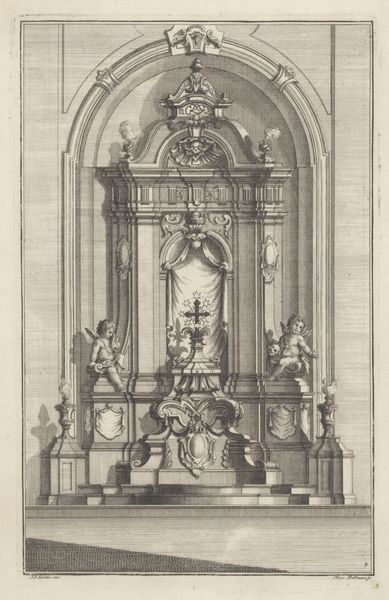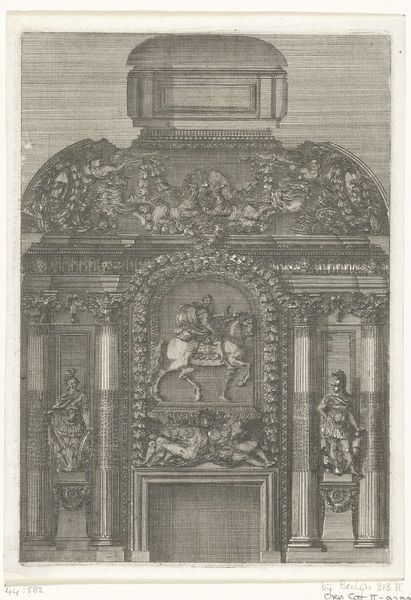
De triomfboog van Filips (achterzijde); intocht van Ferdinand te Antwerpen in 1635 (nr. 14) 1639 - 1641
0:00
0:00
print, etching, architecture
#
baroque
# print
#
etching
#
etching
#
history-painting
#
architecture
Dimensions: height 570 mm, width 362 mm
Copyright: Rijks Museum: Open Domain
Curator: The artwork before us, created between 1639 and 1641 by Theodoor van Thulden, depicts "The Triumphal Arch of Philip; Entry of Ferdinand in Antwerp in 1635". It’s rendered as an etching, a print of considerable detail and complexity. Editor: My first impression is that it looks… incredibly imposing. A monument of immense scale, judging by the figures present, etched with a painstaking intricacy. The shadows give it such depth. Curator: Indeed. Van Thulden uses etching to articulate every decorative flourish. Observe the balanced symmetry; the architecture frames a vanishing point, structuring our perspective within. We can focus on the relationships between line and shadow. Editor: But it is precisely that imposed symmetry that hints at the very controlled performance of power. Antwerp, then under Spanish rule, puts on this ostentatious display to welcome Ferdinand. Who exactly benefits from this show, and who is excluded? Look at the social and political context! Curator: The social context is embedded in the iconography itself! Consider the allegorical figures adorning the arch – what virtues do they signify? The artist attempts to visually communicate a system of authority. Editor: Agreed, but that system isn’t neutral. That triumphant entry glosses over complex issues of colonial exploitation, the subjugation of local populations, and religious conflict. To view this arch outside the history is irresponsible, I think. Curator: Still, we can also study the method through which the visual vocabulary constructs the notion of ‘triumph’ through representational structures. Even as print, its monumental structure commands power over the observer, through complex formal qualities. Editor: It’s important to analyze form, yes. Yet let's remember art can mask other agendas too. Curator: Indeed, this has made me consider more deeply how political context influenced Theodoor van Thulden in terms of symmetry. Editor: And, on my part, I've taken new note of how meticulous attention to architectural detail renders this artwork truly formidable.
Comments
No comments
Be the first to comment and join the conversation on the ultimate creative platform.
